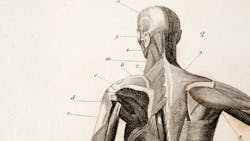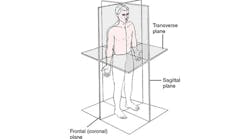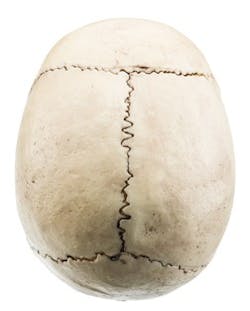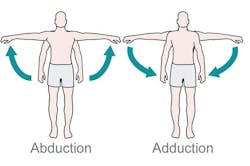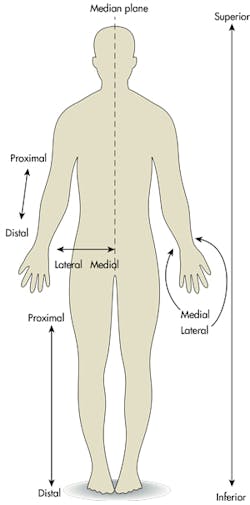READ MORE: Redesigned Knee Joint Replacement Lets Patients Stay Active
Biomedical engineers have adopted a host of terms from the medical industry to describe the locations of sensors and implants, as well as motions of those implants. It’s natural that they share these accepted terms since medical practitioners long ago established and clearly defined them and biomedical engineers are now a part of that community. Here are some terms that might confuse biomedical engineers and other types of engineers (such as EEs and Mech Es), working on medical devices and equipment.
Getting on the Right Plane
These sagittal, coronal and transverse planes are orthogonal planes that slice through a human body at 90 deg. to each other.
The sagittal planes, also called median or lateral planes, slice the body vertically from left to right. Technically, “the” sagittal plane goes right through the middle, dividing the body into right and left halves. It is named after the sagittal suture, the line running along the top of the skull marking where the left and right halves grew together during infancy. Planes parallel to “the” sagittal plane can be identified as parasagittal planes.
The coronal planes, or frontal planes, divide the body vertically into front (ventral or anterior) and back (dorsal or posterior). They are named for the coronal suture that marks where the skull’s two parietal bones grow and meet the frontal bone.
The transverse planes, also known as the axial or horizontal planes, are parallel to the ground and divide the body into top and bottom parts, with the midpoint being near the waist. The top and bottom sections also called superior and inferior sections or cranial (head) and caudal (tail) sections.
Abduction or Adduction?
The terms “abduction” and “adduction” sound a lot alike and can confuse those newly involved in medicine and biomechanics. In those disciplines, movements of limbs and other body parts toward or away from the vertical center line of the body (the sagittal plane) are termed adduction and abduction, respectively.
Adduction is the movement of a body part toward the body’s midline. So, if a person has their arms straight out at the shoulders and brings them down to their sides, it is adduction. For fingers or toes, adduction brings the digits toward the center of the hand or foot. For example, if a person has their fingers spread wide, bringing them together would be adduction. Closing arms to the chest or bringing knees together are other examples of adduction. Any muscle that creates this type of motion is called an adductor.
READ MORE: Five Biosensor Applications to Look Out For
For normal pairs of eyes (not cross-eyed, for example), when the right is adducted, it moves toward the center of the face and looks left. At the same time, the left eye is abducted, moving away from the midline of the face and looking left. So in people with normal eyes, when one eye is adducted, the other abducts.
Abduction is any motion of the limbs or other body parts that pulls away from the sagittal plane. Swinging the hands from the side of the body up to the shoulder or higher is abduction. For fingers and toes, abduction spreads the digits away from the hand or foot’s centerline. Raising the arms laterally to the sides and moving the knees away from the midline are some examples of abduction. Any muscle that creates this type of motion is termed an abductor.
READ MORE: The Top Five Engineering Challenges Facing Wearable Medical Devices
…And Other Jargon
There are a whole host of terms used by healthcare professionals and biomedical engineers to describe anatomical positions. Here are explanations of three pairs of anatomical opposites. (Note: They all apply to a standing human body.)
Medial and lateral: Medial refers to being toward the midline of the body or the median plane, which splits the body, head-to-toe, into two halves: the left and right. Lateral is the side of the body or part of the body that is away from the middle. So arms are lateral to the torso while the torso is medial to the arms. And the medial side of the knee is the inside part or side nearest to the other knee, while the lateral side of the knee faces away from the center of the body and is farthest from the other knee.
Superior and inferior: These terms reference the body’s horizontal vertical axis (the transverse [plane) , and a body part higher than another or above it is said to be superior to it; conversely, the other body part is inferior to or below the first. So, the head is superior to the neck, the neck is superior to the torso, and the torso is superior to the legs.
